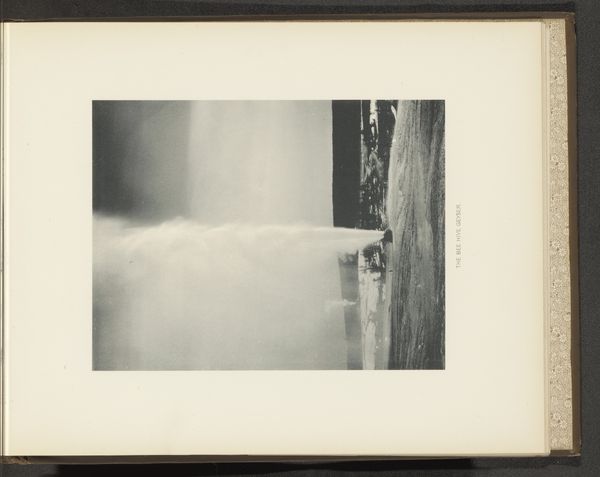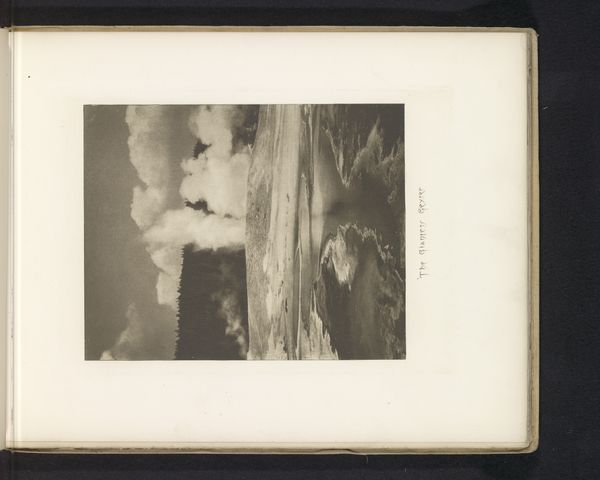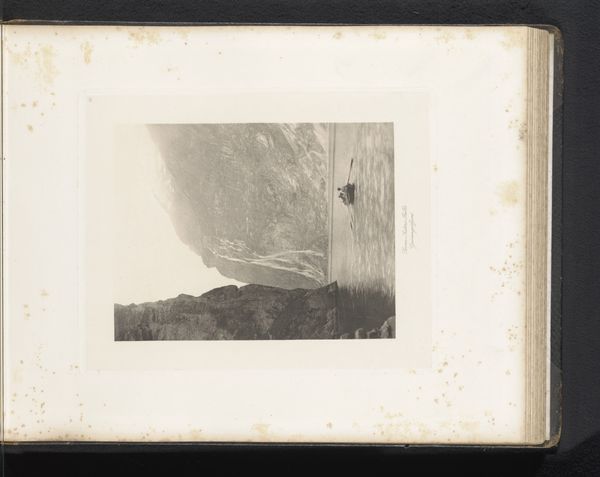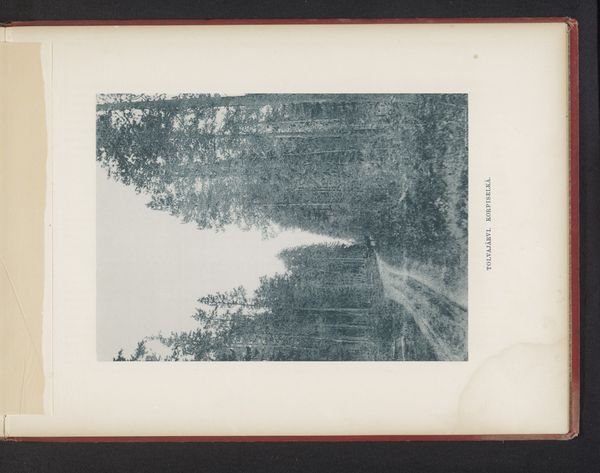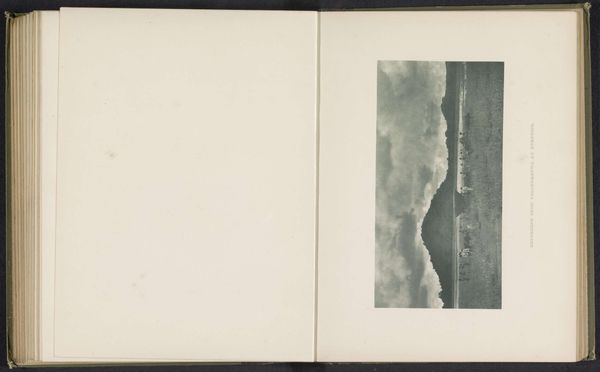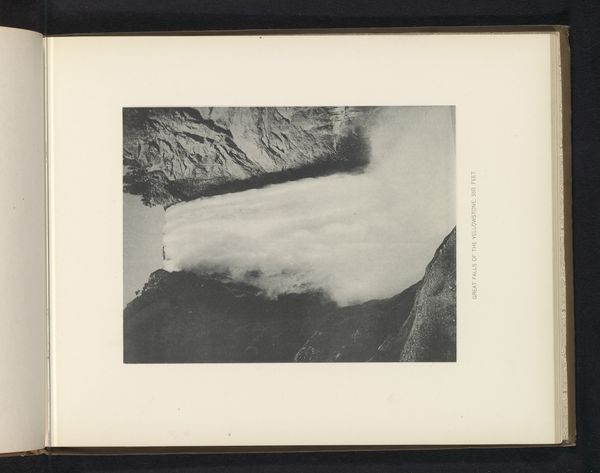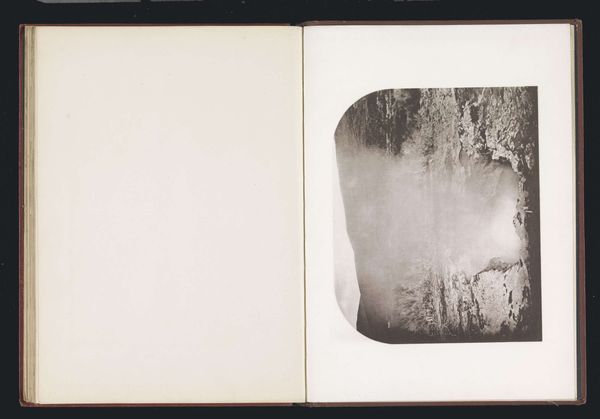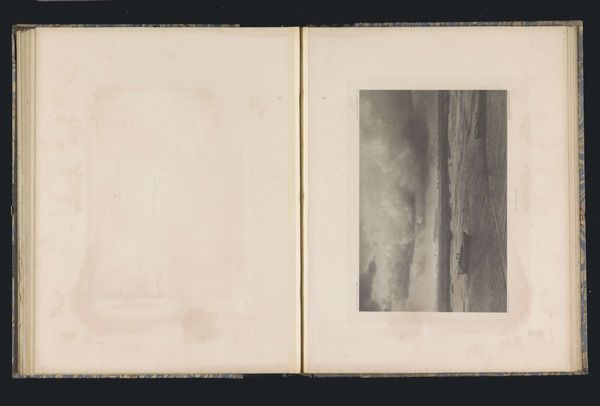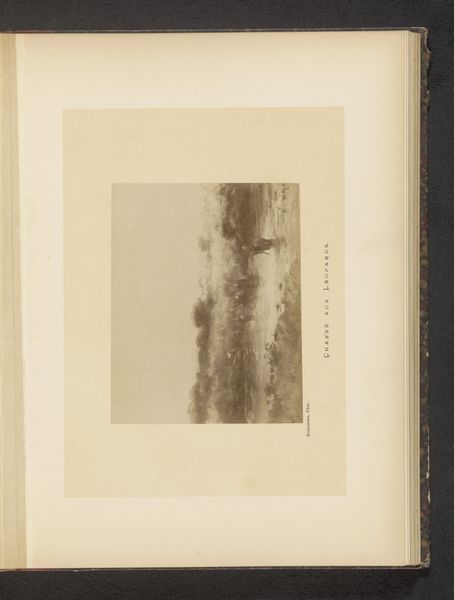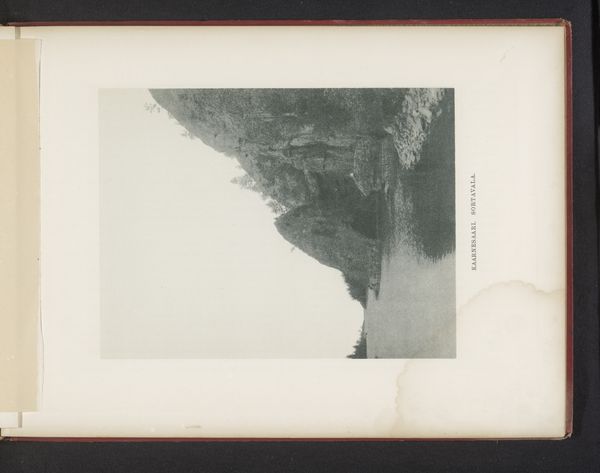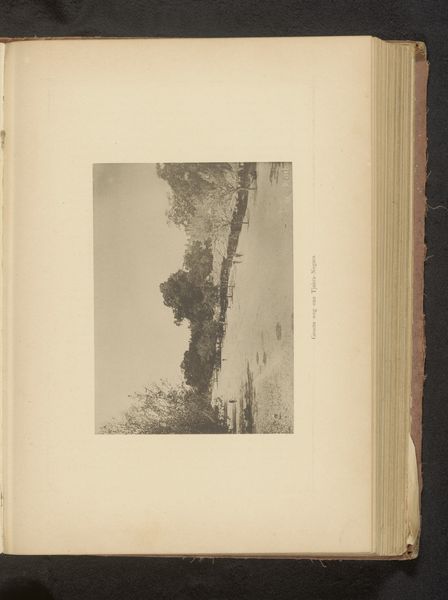
photography, gelatin-silver-print, albumen-print
#
pictorialism
#
landscape
#
photography
#
gelatin-silver-print
#
albumen-print
#
realism
Dimensions: height 215 mm, width 165 mm
Copyright: Rijks Museum: Open Domain
Curator: This is Frank Jay Haynes' "Old Faithful Geyser," taken before 1891, captured in gelatin-silver print and albumen print. It portrays a landscape emblematic of the American West. Editor: What strikes me is the raw, almost industrial quality. It's not just a pretty landscape, but something that hints at power, at a volatile materiality. Curator: Haynes’ work needs to be viewed within its socio-historical context. These images played a critical role in constructing narratives around American expansionism and environmental transformation. It was crucial for cultivating the idea of 'untouched' wilderness and served colonial interests and justified the ongoing displacement of indigenous populations. Editor: That's fascinating, seeing this piece now makes me think about the geological processes – the build-up of pressure, the volcanic activity simmering beneath the surface, mirrored, perhaps, in that societal pressure you mention. Curator: Exactly. The steam cloud against the dark surrounding elements – it represents both natural wonder and a foreboding premonition, especially when viewed through the lens of social progress. It's essential we examine the historical implications regarding conservation and environmental ethics related to colonial legacies and capitalist interest in the west. Editor: And I suppose, looking at the physical photograph itself, it speaks to its own historical means of production: the developing, the darkroom processes, the very specific, arduous labor. Each print being subtly unique. Curator: Considering the access to the Yellowstone, how race, gender, and class intersect in determining who can have their experiences documented in these historic images. The history embedded in the production process becomes as relevant as what the photograph explicitly represents. Editor: So the photograph almost operates like extraction – both resource extraction and representational. The value created wasn't just in the image, but what it symbolized for developing interests around western territories and consumption. Curator: Absolutely. It makes one consider Haynes' perspective, his positionality in contributing to a larger framework of Western cultural hegemony while simultaneously providing this majestic, yet unsettling natural monument for consideration. Editor: Seeing it in this light, I think my initial read was incomplete, too focused on just the materials. Recognizing this, that complex system is truly powerful, more so than when thinking of individual materials and components alone.
Comments
No comments
Be the first to comment and join the conversation on the ultimate creative platform.
